Gyaw Gyaw is a small team of carpenters, architects and teachers working closely together since 2009. We are a Norwegian registered organization, but besides of founder/director Line Ramstad (Norway) and architect Jae-Young Lee (Germany/South Korea), the team consist of local Karen people from the Thai/Burma border where our work is implemented in line with the area’s cultural frames.
With our own organization as example and respectful collaborations with a great variety of local stakeholders, we are today valued as a democratically run organization in an area where strong hierarchies are the norm. This position allows us to utilize sustainable architecture as a tool and include villagers and local stakeholders for a sustainable development from the bottom-up.
The physical result is soon to be 70 designed and built projects. The majority are facilities for existing schools and establishments, lifting education in our own neighborhood. They are all landscape and climate adjusted, designed for natural light and airflow and built with locally available materials that preserve the environment, are socially accepted and economically efficient in a long-term perspective. Without the human aspect, the buildings would however not have mattered.
Our area is mountainous and covered by subtropic rainforest. In the beautiful, but impassable valleys between the many peaks, there are small, secluded villages.
The villagers survive here from hand to mouth from what the jungle can provide. With no legality, illiteracy being widespread and traditions like supernatural belief and teenage marriages still having a strong position, there are few opportunities for the children growing up. Even if a school is present, it is not always the chosen alternative. The more hands out harvesting, the more food on the table.
In villages where the school have a stronger position, we do however observe that the local communities work a lot better. Children are regularly attending school, long-term plans are made and there are increased opportunities for all. The villagers are also less vulnerable to be exploited and talented students have managed to find a path further.
By collaborating with existing schools, contributing with functional facilities, and cooperate widely with different stakeholders in the village through each process, we lift the school’s position and allow for knowledge exchange and human/environmental rights to be put on the agenda.
By promoting the use of climate adjusted design, local materials and applying traditional practices to our projects, we provide an alternative and environmental path to development, where the human aspect is the core, leaving architecture as a tool, not a goal in itself.
Shared time and experience are also enhanced as a value, not a cost to limit. It provids opportunities to emphasis on issues like family relations (equity), health and hygiene and allow for environmental challenges, like plastic waste, to be highlighted.
The social impact of Gyaw Gyaw as an organization itself, showing democracy and human rights in practice, is also an important aspect of our work.
Despite our work being limited to a geographical area, our philosophy is of a global character and a long-term commitment in a small area provides a unique insight in the social impact our projects have for the users and their surroundings.
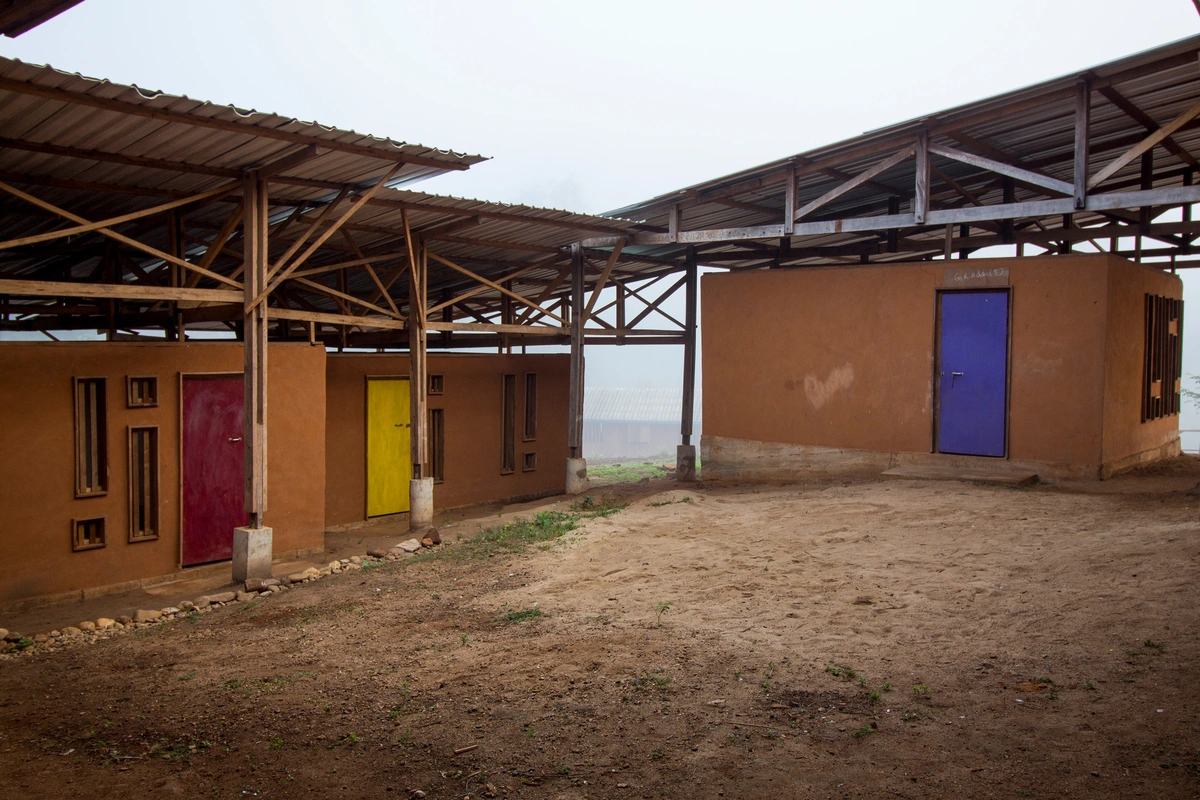
Gaw La Heh Primaryschool. Six classrooms, two dormitories and a renovated kitchen. All in adobe. Designed and built by Gyaw Gyaw in close collaboration with the school and village from 2016 to 2020. Picture by Vincenzo Floramo.
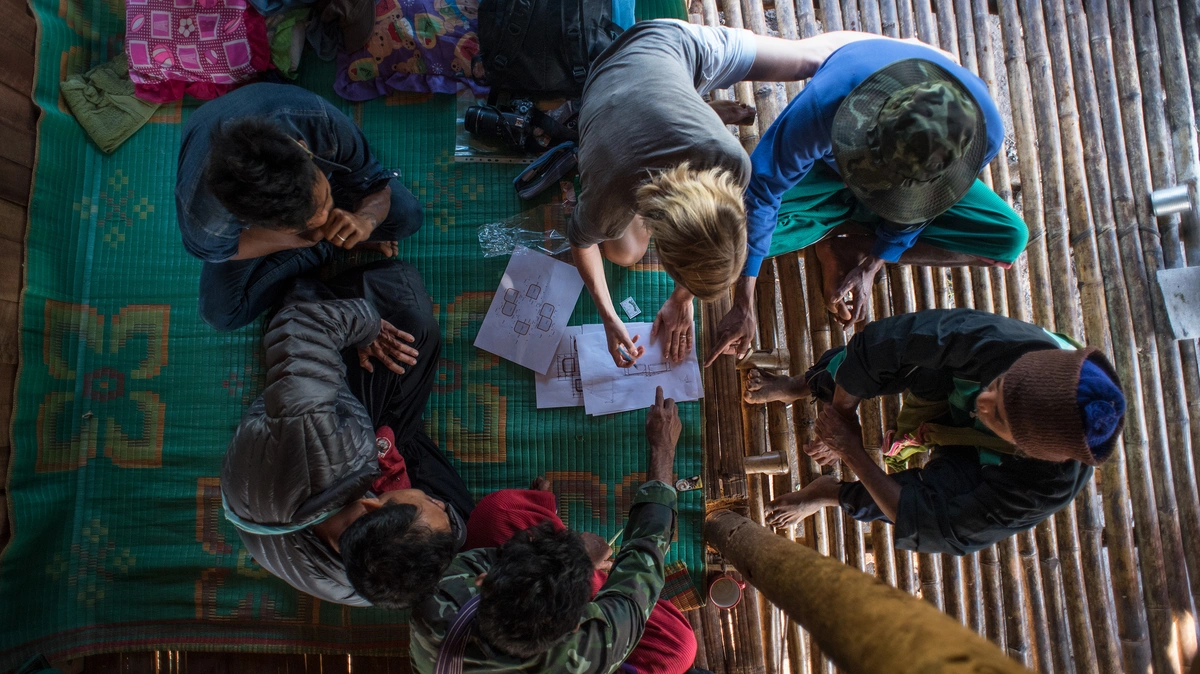
Gyaw Gyaw project meeting on site. Picture by Vincenzo Floramo.
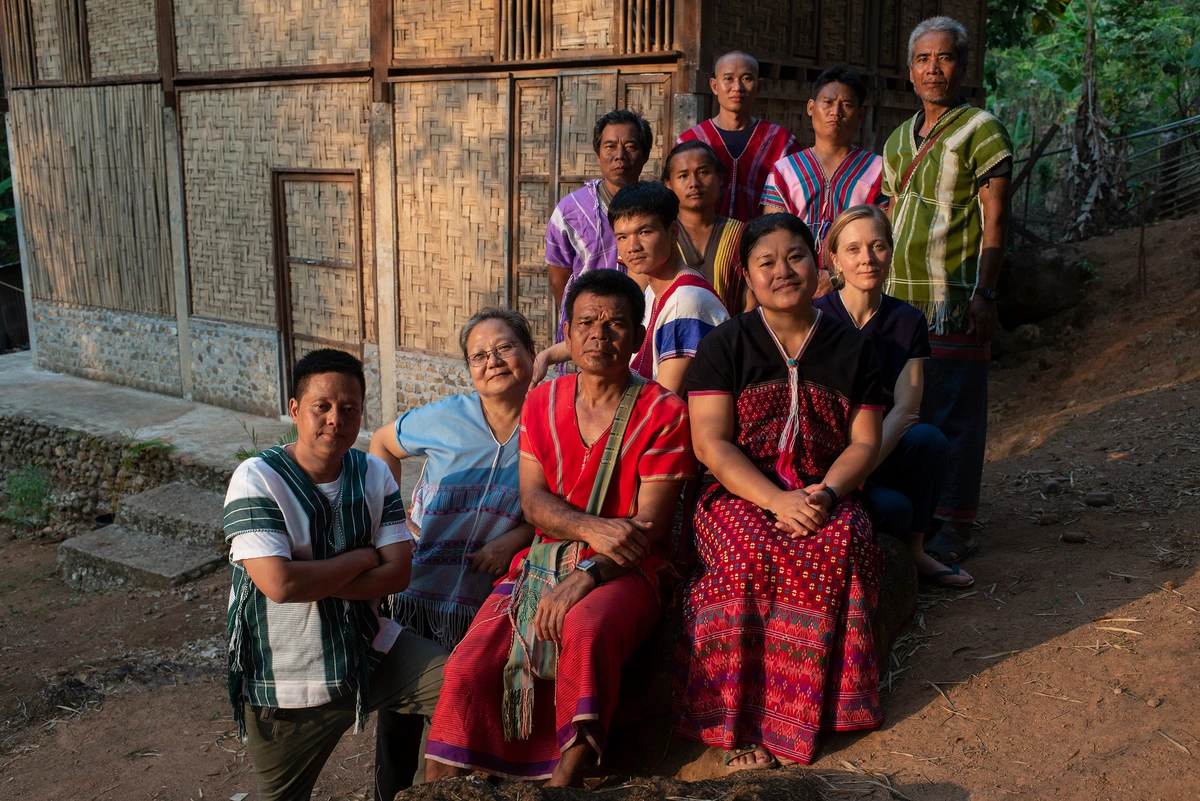
Gyaw Gyaw team 2020. From back left: Kee Kee Pah, Pah Da, Pah Me, See Da Pah, Nee Eh, Bee Bee, Line Ramstad, Saw Dee, Phaw Reh Mo, Phillipa and Paw Eh Wah. Architect Jae-Young Lee was not present. Picture by Vincenzo Floramo.
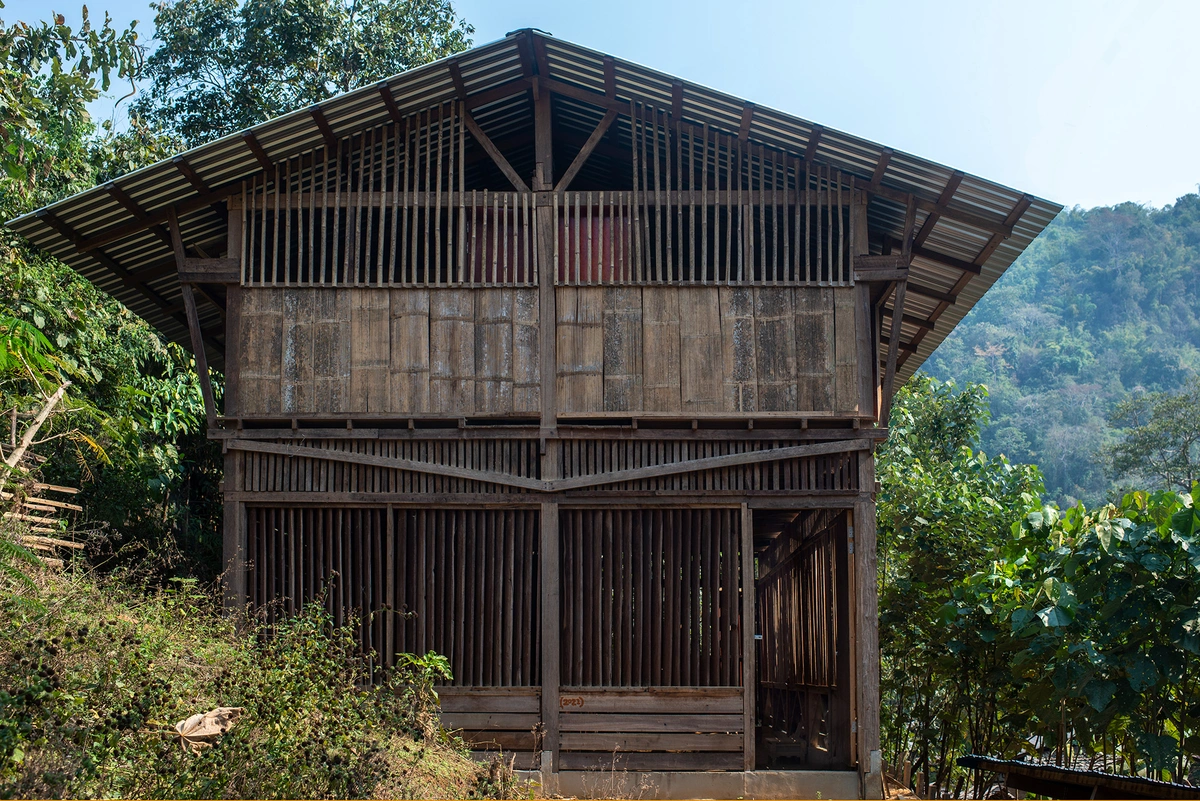
Kle Mo Kee Teacherhouse. Gyaw Gyaw has designed and built three classrooms, a teacherhouse and toilets in close cooperation with the school and village in the period from 2019 to 2021. Picture by Vincenzo Floramo
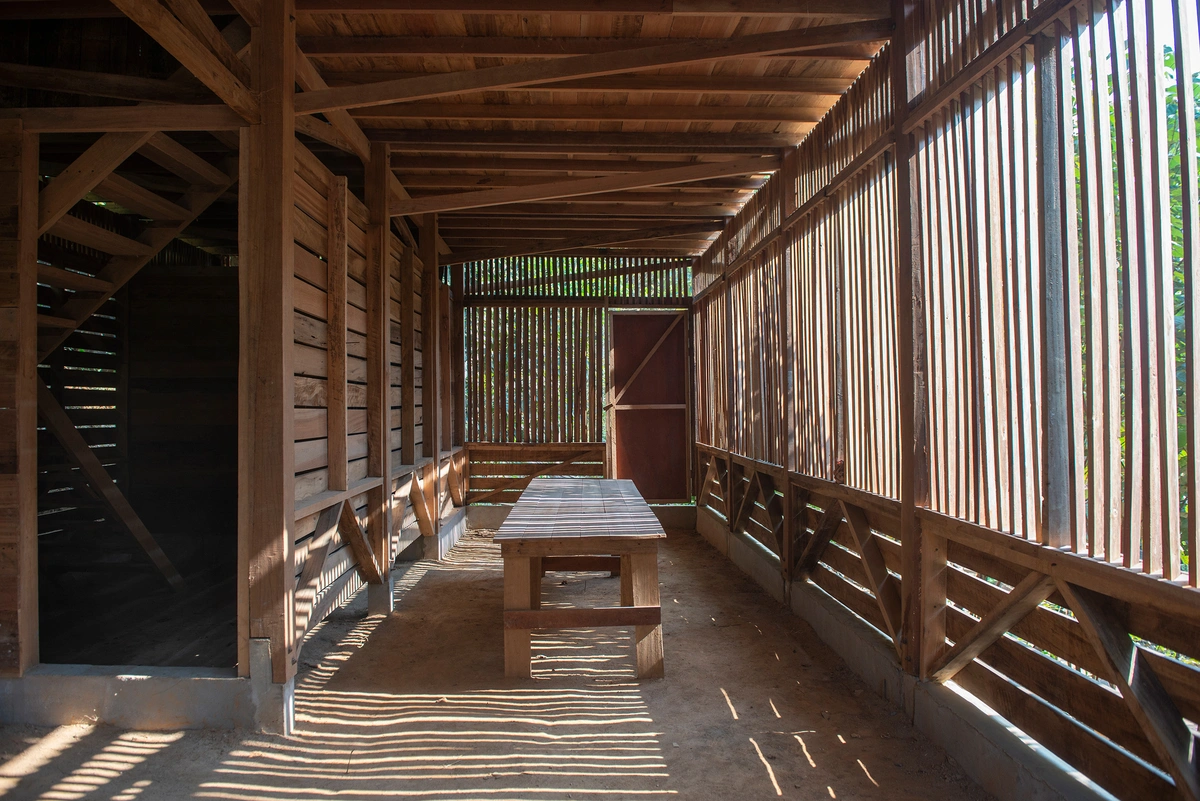
Kle Mo Kee Teacherhouse, interior. Teachers meeting room. Picture by Vincenzo Floramo.
Gyaw Gyaw means slowly in Karen language and reflects our philosophy of a slow and sustainable development in line with the society around us.
We are a team of 12 dedicated colleagues, working closely together since 2009. The majority are local Karen, and the architects (Norwegian, South Korean/German) have been living here for years and understand the written and unwritten rules that are framing all our work.
As an organization, we are well-run with a flat structure and divided responsibilities. We have a continuous work schedule with projects and holidays planned for years ahead. The civil war also requires flexibility to quickly reorganize project priorities.
With program based and long-term sponsor agreements from a few Norwegian companies, our funds are adjusted to our work, allowing us to run our organization wisely and allocate the funds between projects. It is our continuous work and commitment to development in our area that they support, not a specific building.
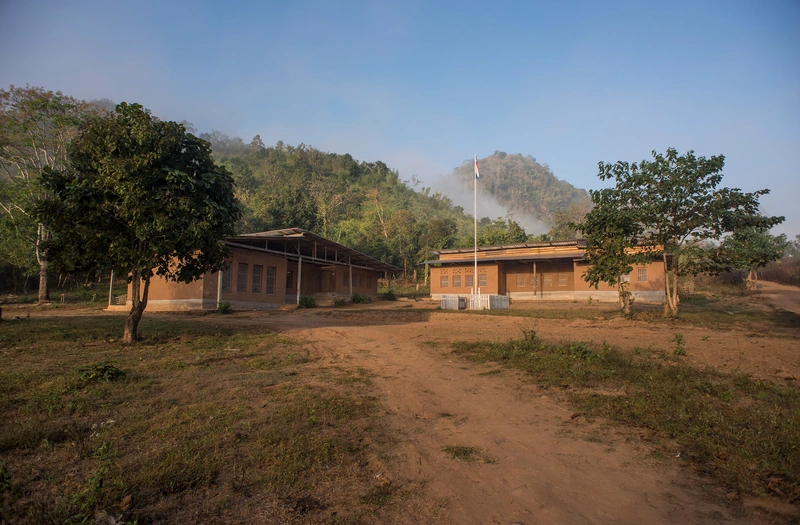
Kler Deh Highschool. Six classrooms, four dormitories, library, office, kitchen, toilets solar and water purification system, designed and built by Gyaw Gyaw in close collaboration with Karen Education Department, Pa Ahn district, from 2014 to 2020. Picture by Vincenzo Floramo.
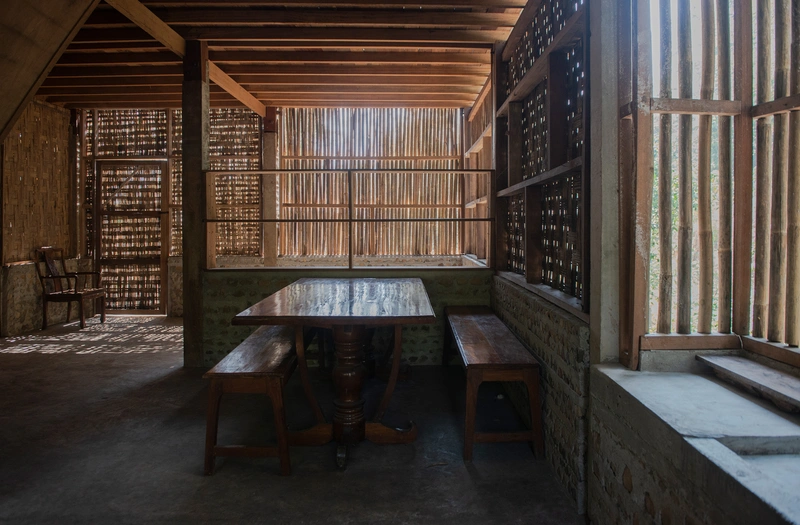
Gyaw Gyaw teamhouse. Designed and built by Gyaw Gyaw during Covid closedown in 2019/2020. Picture by Vincenzo Floramo.
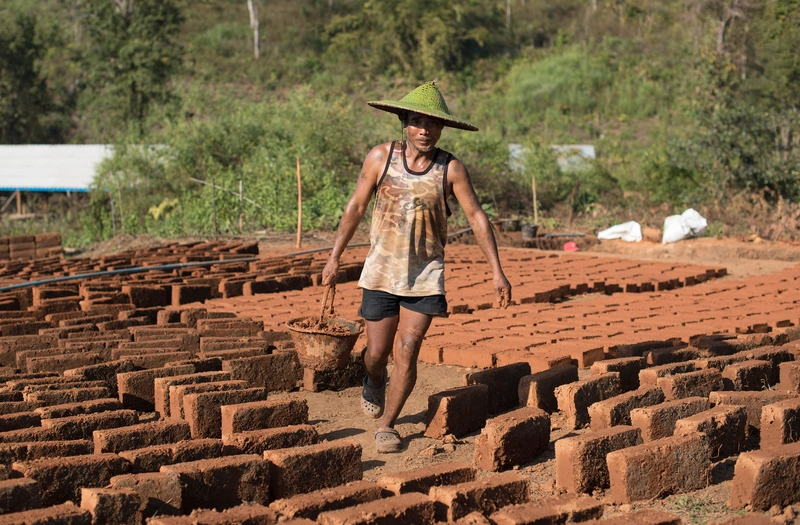
Adobe production. Gyaw Gyaw team member Pah Me carrying mud for production of adobe bricks on site. Picture by Vincenzo Floramo.
